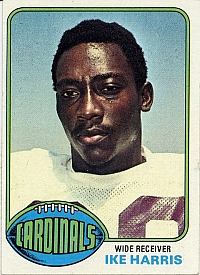Skip the paragraph after this if you don’t care about the gory mathematical details, and just know that WOWY basically answers the question: “Did a receiver’s quarterbacks play better when they threw a lot to him, or not?”
For the brave souls who care about the calculation: WOWY starts by measuring the difference between a QB’s age-adjusted Relative Adjusted Net Yards Per Attempt in a given season and his combined age-adjusted RANY/A in every other season of his career. This is computed as an average for each team’s QB corps, using a combination of QB dropbacks during the season in question and the rest of his career as the weights (the exact formula is: weight = 1/(1/drpbk_year + 1/drpbk_other)). Finally, for each receiver we compute a weighted career average of the QB WOWY scores for the teams he played on, weighted by his True Receiving Yards in each season.
At any rate, the only players who don’t get a WOWY are those who either debuted before 1950, played with a QB who debuted before 1950, or played with a QB who ever threw to a receiver who debuted before 1950. Here are the career WOWY marks (when applicable), alongside TRY, for every 3,000-TRY receiver whose career started in 1950 or later:
Unfortunately, guys like Don Maynard still have NULL WOWYs (sorry Chase), because he played with QBs and fellow receivers whose careers predated 1950, but we do finally have WOWY scores for the likes of Harold Jackson (whose solid +0.7 mark is not a surprise), Lance Alworth (+0.8), and more pre-merger pass-catchers. Here’s the same list as above, but with the NULL guys removed, and sorted by WOWY:
Many of the names atop the list are familiar from our first WOWY post, but some new ones stand out:
- Ike Harris is a shocker atop the entire list. He places that high because, on his watch, both Jim Hart and Archie Manning had the best seasons of their careers (especially after adjusting for age). Hart had already been a pretty solid QB (+0.5 career RANY/A) going into the 1975 season, but he was what the kids today call “Elite” — the league’s 3rd-most efficient passer — over the 3 years when Harris and Mel Gray were his most frequent targets. Meanwhile, Manning had been horrible (-1.1 career RANY/A) going into the 1978 season (Harris’ first in New Orleans), but from 1978-80 his RANY/A was +0.9, and Harris was once again the team’s second-leading receiver. After Harris was phased out of the Saints offense in 1981, eventually retiring after the season, Manning once again reverted to his previously awful form (-1.8 RANY/A from 1981 onward). Harris was a #2 receiver at best and only played 7 seasons (5 as a starter), but on two different occasions he was associated with drastically improved play from his QBs.
- Though Gene A. Washington is generally underrated, he and Ted Kwalick are up there in no small part because of their presence as the leading receivers on the 1972 San Francisco 49ers, a team that received improbably strong quarterback play from Steve Spurrier and John Brodie. I say it was improbable because 1972 was the only season in which Spurrier saw significant playing time and posted an above-average RANY/A (he wasn’t just slightly above-average, either — his RANY/A was +1.1, 5th-best in football). Over the rest of his career, Spurrier’s RANY/A was -1.2. For his part, Brodie had a much better career than Spurrier (including an epic season just 2 years earlier), but he was also 37 years old in 1972, an age by which most QBs have greatly deteriorated.
- The “other” Gene Washington was also a pretty underrated player over the course of his career. The 1970 Vikings had the most total Approximate Value of any team since the merger (well, tied with the 2007 Patriots), with maybe the best D ever but also somehow an above-average offense despite Gary Cuozzo at QB. Washington was a Pro Bowler and had actually been 1st-team All-Pro in 1969 despite only posting 821 receiving yards. After putting up 1,523 catch yards in 1969 and 1970, Washington had only 574 over the rest of his career, and it doesn’t look like he was even hurt or anything. Not sure what happened to him — it’s possibly a research topic for a future post (or podcast?).
- A bunch of these receivers can be associated with an all-time outlier/fluke QB season: Moss with Randall Cunningham‘s 1998 (and Tom Brady in 2007); Roger Carr & Glenn Doughty with Bert Jones‘ 1976; Brandon Stokley with Peyton Manning‘s 2004; Gene A. Washington with Brodie’s 1970; Sidney Rice & Percy Harvin with 40-year-old Brett Favre‘s 2009; Lance Alworth with Tobin Rote‘s 1963 (plus several John Hadl seasons); J.J. Birden and Stephone Paige with Steve DeBerg‘s 1990; etc. I realize that’s tied to the very definition of this metric, but it’s interesting to trace back which season(s) fed a receiver’s WOWY the most. Was it the receiver or the QB? It’s still hard to say, but the ability to repeatedly contribute to QB career years is probably a good sign of receiving greatness.
- This is a topic for a later post, but what do we make of guys like Harvin and Gene “No Middle Initial Here” Washington, who have great career WOWY scores but played for below-average passing offenses? Did they elevate bad supporting casts? Or if they’re so great, why didn’t they play in great passing attacks? All questions to answer at a later date.
- And Mark Carrier still looks terrible, with the worst WOWY among all qualifying receivers since 1950.
So, what stands out to you in the expanded WOWY results?

